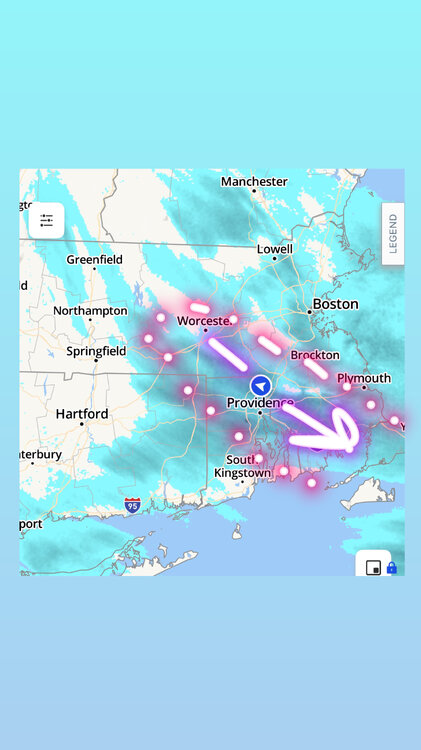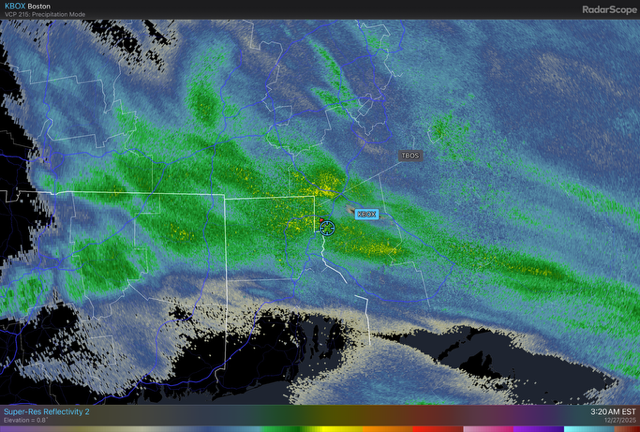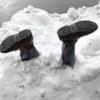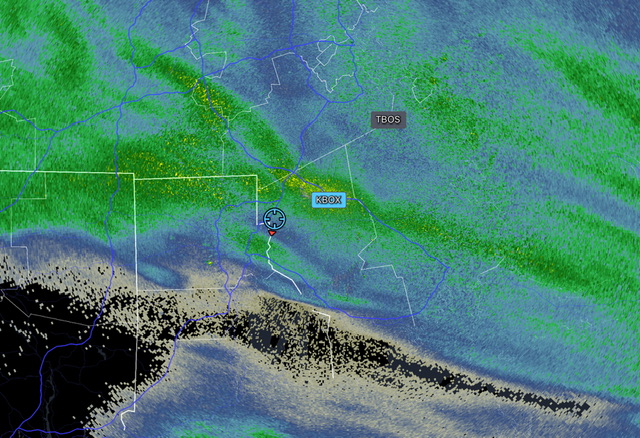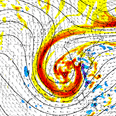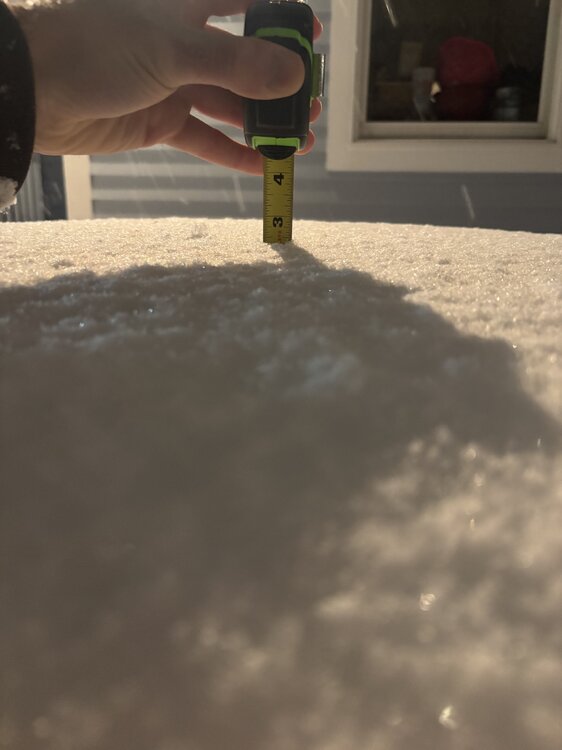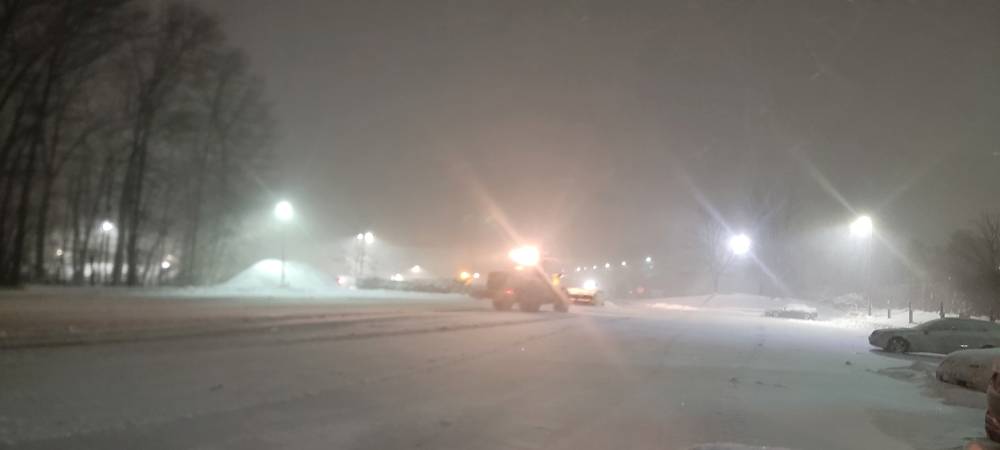All Activity
- Past hour
-

Wounded Duck Strikes Back: Dec 26 & 27th Winter Storm Obs
TheSnowman replied to WxWatcher007's topic in New England
This is officially one of the ONLY Storms I can Ever remember, where I was in the Best spot for 2 hours +. From 1:30-4am me to Franklin has been the Best Spot Consistently. -
Yeah its still coming down here in the bx.. im now over 4 inches here. Still snowing at a moderate clip atm.
-
I don't know about NYC but I'm definitely over 5" in jersey city - this band has been sitting over me for hours
-
Pop of light snow at the moment with 3" OTG
-
With the new year approaching, I am terminating the 2025 contest thread with the results of Dec 2025 and the annual contest, and moving all new activity over to this thread where you can post Jan 2026 forecasts at any time, as is our custom in January, no late penalties will fall until later into the first week, let's say for sure no penalties before end of Jan 2nd, so take your time and post / edit freely -- if you don't see a table of forecasts you can edit because I only see the forecasts when I make up the table. For anyone new wanting to enter, the forecast contest asks you to predict temperature anomalies at nine locations across the U.S., in F deg relative to 1991-2020 averages. The nine locations are DCA _ NYC _ BOS _ ORD _ ATL _ IAH _ DEN _ PHX _ SEA ... Happy new year ...
-

Wounded Duck Strikes Back: Dec 26 & 27th Winter Storm Obs
TheSnowman replied to WxWatcher007's topic in New England
Me too Franklin, MA continues to be the Best spot on radar. Truly never imagined that happening. -
Yes, Edmonton Alberta is running 12 F below normal (7 C below) but that colder regime has stayed locked into central Canada most of the last week to ten days. It hasn't even been below average here near the US border. Just a general note to all participants, I will open up a thread for 2026 contest forecasts and see how that goes, perhaps we will continue on, and perhaps not. Depends on level of interest, it's easy enough for me to keep doing what I normally do but at the same time, I don't want people to enter out of anything other than an enthusiasm for tackling the challenge. So if anyone happens to post Jan 2026 forecasts after this post, I will move them over to the new thread which will be open almost as soon as I post this. Happy new year, I am not going to post any preliminary scoring for December, we will let the results be a total surprise on January 1st or 2nd.
-

Wounded Duck Strikes Back: Dec 26 & 27th Winter Storm Obs
Baroclinic Zone replied to WxWatcher007's topic in New England
-
Still snowing but def won't be the 6+ amounts. Cpk def got 3+ inches by now. The ivt also is currently over us.
-

Wounded Duck Strikes Back: Dec 26 & 27th Winter Storm Obs
TheSnowman replied to WxWatcher007's topic in New England
Absolutely Perfect Snow. 3.25". 0.5" per hour rate continues. How am I the only one up?? I’m ALWAYS up till 4am, and Especially for this! I’m on the cusp of seeing 4” of Snow on the ground here for the FIRST TIME SINCE 2022! But I ain’t counting any chickens. -
can report a similar story in Rockaway- NJ.. the attached radar loop shows what almost looks like a thumb of echoes moving Northwest within the overall echoes (Norlan trof?) …this is on a 0.5 degree tilt 122725 3 am.mov
-
clearly a bust for central park and other parts of the city..
- Today
-
We had 2.2 before the final bands came thru..3.6 down and still snowing lightly.
-
Boxing Night Snow/Sleet/Ice Dec 26-27 Storm Thread/Obs.
RU848789 replied to Mikeymac5306's topic in Philadelphia Region
Just finished shoveling and it looks like the storm is done, so unless something happens overnight, my final measurement is 1.8", as we got about 0.1" the last hour. Not as bad as it was looking at 10 pm, but still a pretty significant bust when we were under a winter storm warning for 4-7", my hourly forecast gave me 5.7" this morning, and the average model snowfall was about 5.5" (over 10 models) - and my prediction was 6.1" (oof). Of course it's way better than the rain and 60F it was looking like 10 days ago, but still disappointing. Pretty snowfall, though, and loved having temps in the 20s for most of it. Feels like winter. Brings me to a healthy 9.6" for December, my most since we got 10.3" in Dec 2017. -
Just finished shoveling and it looks like the storm is done, so unless something happens overnight, my final measurement is 1.8", as we got about 0.1" the last hour. Not as bad as it was looking at 10 pm, but still a pretty significant bust when we were under a winter storm warning for 4-7", my hourly forecast gave me 5.7" this morning, and the average model snowfall was about 5.5" (over 10 models) - and my prediction was 6.1" (oof). Of course it's way better than the rain and 60F it was looking like 10 days ago, but still disappointing. Pretty snowfall, though, and loved having temps in the 20s for most of it. Feels like winter. Brings me to a healthy 9.6" for December, my most since we got 10.3" in Dec 2017.
-
Sound effect snow in to the bx is crazy never seen that. We have 3+ inches here and it's still snowing.
-

Wounded Duck Strikes Back: Dec 26 & 27th Winter Storm Obs
Baroclinic Zone replied to WxWatcher007's topic in New England
-
28 with light snow. 6" otg
-
Looks like snow is winding down here in Bayside. Definitely in between 3.5 and 4”, a general 2-4” across the city. Maybe Central Park comes in closer to 3” at 7 am
-

Wounded Duck Strikes Back: Dec 26 & 27th Winter Storm Obs
weathafella replied to WxWatcher007's topic in New England
3” and still counting. -
Wounded Duck Strikes Back: Dec 26 & 27th Winter Storm Obs
CTSkywarn replied to WxWatcher007's topic in New England
North Madison, CT: 20°, SN, 7.1" as of 2 AM. Still coming down! -
yup, still light-mod snow here, measured 2.4” 10 mins ago… very happy to end up getting close to 3” when all is said and done given how the event began
-
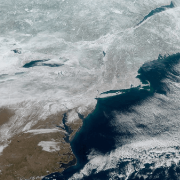
Wounded Duck Strikes Back: Dec 26 & 27th Winter Storm Obs
WxWatcher007 replied to WxWatcher007's topic in New England
Snowing nicely here and at WXW1. Up here the radar has filled in nicely. -
Sorry to say but this storm was over before it start on the NYC/WLI area. And now....it's really over. Solid 1" here in North Western Nassau
-
Wounded Duck Strikes Back: Dec 26 & 27th Winter Storm Obs
RyRyB replied to WxWatcher007's topic in New England

